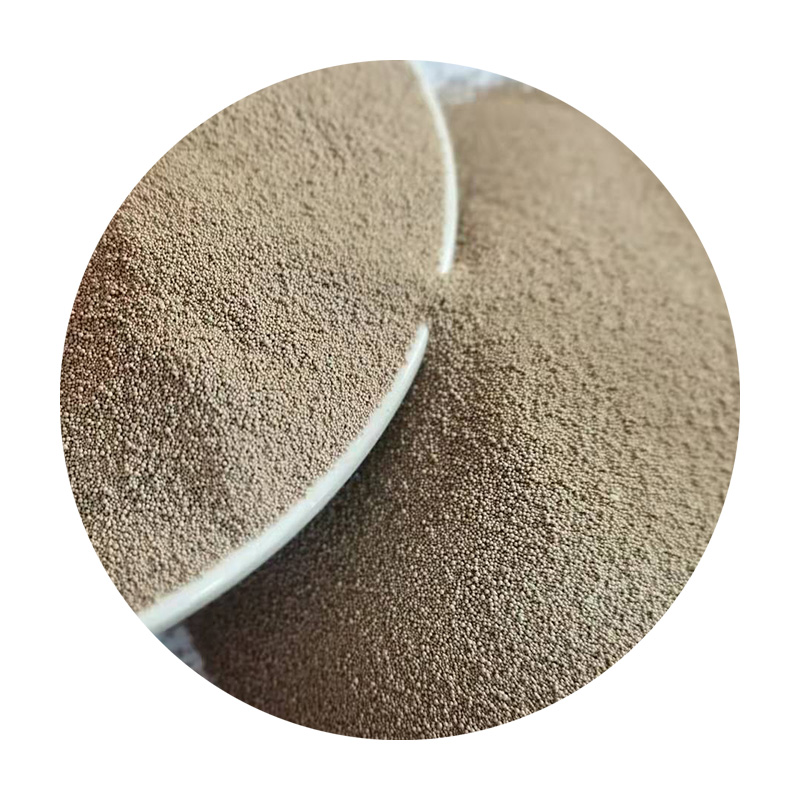Understanding Sand Sintering Techniques, Applications, and Future Perspectives
Sand sintering is a fascinating process that has gained significant attention in materials science and engineering. This technique involves the heating of sand particles to a point where they bond together without melting entirely, resulting in a solid mass. It is widely used in various industrial applications, including foundry processes, construction, and even the production of advanced materials. In this article, we will delve into the mechanisms of sand sintering, its applications, benefits, challenges, and future developments in this field.
Mechanisms of Sand Sintering
The basic principle of sand sintering relies on the phenomenon of particle adhesion through diffusion. During the sintering process, sand grains, typically composed of silica, are heated to high temperatures. As the temperature rises, the mobility of atoms at the surface increases, allowing them to diffuse and bond with neighboring particles. This process is critical in achieving densification and strength, as it reduces the porosity of the material.
Various factors influence the sintering process, including temperature, time, and the presence of additives. The choice of temperature is crucial since it must be high enough to facilitate particle bonding but low enough to avoid complete melting. Additionally, the duration of the heat treatment can affect the final properties of the sintered material. Additives, such as clay or resin, may also be introduced to enhance the bonding efficiency or to improve the desired characteristics of the final product.
Applications of Sand Sintering
One of the primary applications of sand sintering is in the foundry industry, where it is used to create molds and cores for metal casting. The ability to produce complex shapes with high precision makes sintered sand molds an invaluable asset in manufacturing. Moreover, the process allows for the creation of molds that can withstand high temperatures, ensuring the integrity of the final cast product.
In construction, sintered sand is utilized to produce various types of bricks and tiles. The strength and durability of these materials are significantly enhanced through the sintering process, making them suitable for structural applications. Additionally, sintered sand can be used in road construction, offering a cost-effective and sustainable alternative to traditional materials.
sand sintering

Advanced applications of sand sintering have emerged in the field of additive manufacturing, also known as 3D printing. Sintered sand is gaining interest as a material for creating intricate designs and structures that would be difficult to achieve with conventional methods. This innovation not only expands the possibilities for design but also contributes to resource efficiency by minimizing waste.
Benefits and Challenges
The benefits of sand sintering are numerous. The process is environmentally friendly, as it often utilizes natural materials and results in less energy consumption compared to other forming methods. Additionally, the mechanical properties of sintered sand products, such as their strength and resistance to high temperatures, make them ideal for a wide range of applications.
However, challenges remain in optimizing the sintering process to achieve desired properties consistently. Variability in sand composition, particle size distribution, and processing conditions can lead to inconsistencies in the final product quality. Furthermore, the scalability of sintered sand applications, particularly in additive manufacturing, requires ongoing research to develop efficient processes and standardize practices.
Future Perspectives
As technology advances, the future of sand sintering looks promising. Ongoing research focuses on enhancing the existing processes and exploring new materials that can be sintered effectively. Innovations in additive manufacturing, coupled with advancements in material science, may unlock entirely new applications for sintered sand.
Moreover, the increasing emphasis on sustainability in manufacturing processes is likely to drive further interest in sand sintering. The ability to utilize locally sourced sand and minimize waste aligns well with contemporary goals of reducing the environmental impact of industrial practices.
In conclusion, sand sintering represents a crucial area of study in materials science, with a wide array of applications spanning various industries. As researchers continue to refine techniques and explore new possibilities, the benefits of this method will undoubtedly contribute to the development of innovative materials and sustainable manufacturing practices in the future.
Post time:டிசம்பர் . 19, 2024 06:58
Next:Is It Necessary to Sand Your 3D Printed Objects for a Better Finish
